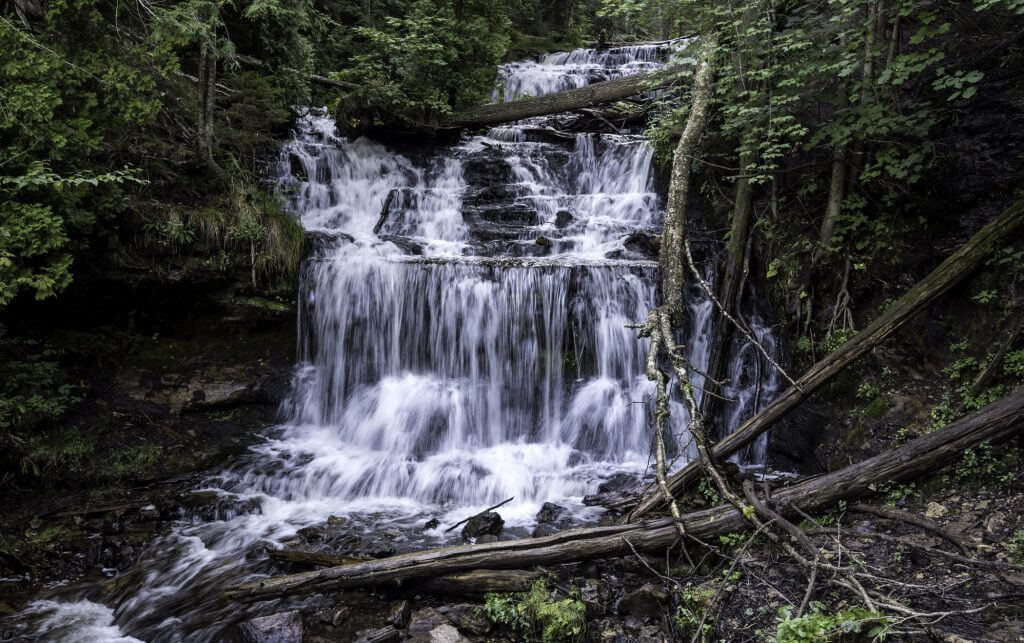When out in the bush the most important objective is to stay hydrated. In most cases you would have brought enough water with you, but unforeseen circumstances such as being lost might get you in trouble. You can survive without food, but you wont last more than a day or two without water, depending on the season. If you are lost, first seek shelter, then seek water.
Plan ahead, study the area
When planning to out to a new location, take some time to study the area first. The best way to do this is checkout a map of the area, be it a physical map or online. Take note of marked river systems and typography. Not only will this come in handy later for finding a water source, but may even help you discover new hiking locations.
Purchasing a physical map of the area just to leave in your pack is a great idea. It could save your life and help avoid getting lost. We all like to think that this would never happen to any of us, but it happens and it can happen to you.
Knowing local typography can help in identifying where water could be collecting and where water is flowing from. This can help in determining if the water is ‘clean’ enough to drink.
Selecting a water source
Clear, flowing water is your best bet, especially that flowing through rocks. Rocky streams act as a natural filter for physical debris in water. Rivers, lakes and stagnant water should be avoided as they are often host to large amounts of potentially dangerous bacteria.

Its also important to know what could be upstream, most of what makes water dangerous is invisible to you. If a water source has flown down from a populated area it could contain chemicals that make it unsafe to drink. Its also important to not that just because the water is a shallow flowing stream, does not guarantee its safety. It is always possible that an animal may be dead in the water upstream or defecated in the water too.
Water sources that should be avoided are salt water and snow/ice. The salt content of salt water will dehydrate you making your dehydration worse. Snow and ice will reduce your core body temperature more than the small amount of water gives back to you. So like salt water, this will make your dehydration worse.
Getting drinking water from non conventional sources
Drinking water can be extracted from many sources if you have access to a flame and suitable container. Such sources, could include salt water, ice, stagnant water and even urine. Boiling water from these sources can remove the water from the harmful components but means of condensation. by catching the steam into a plastic bag, bowl or similar you can get access to pure, safe drinkable water.
Another method of getting clean drinking water from otherwise contaminated sources if filtering. Note however this wont be suitable for salt water and chemically contaminated water, as filtering is to process of removing bacteria from water.
Filtering water
There are many good off the shelf water filters designed for outdoor purposes, two of the leading brands are the sawyer mini and the life straw. Both of these can be picked up from most outdoor stores. We always carry one with us as they’re light weight and can get you out of a messy situation should you find yourself out of water.
Another off the shelf filtering solution is chemically treating the water. Filter tablets and iodine solution, both of these can be found at a chemist or an outdoor store. The draw backs to chemical filtering is that it will give your water a fowl taste. Adding a couple of drops of iodine to your water bottle, shake it well then let it sit for 10 minutes before drinking it. This will kill most of the harmful bacteria in your water.
Making your own filter though is a skill you can learn if you ever find yourself stuck without a filtering option. If you have access to a plastic bottle gut the bottom of it to use it as a funnel. From the bottom of the funnel to the top you want to build up layers. The bottom of the funnel should consist of crushed carbon. followed by clean sand, then small rocks at the top.
For the best carbon for filtering, you will need to create a hot fire and once the coals are red starve the fire of oxygen. This is called activated carbon, it characteristically sticks to everything it touches. This is good for filtering as it will attach itself to any bacteria in the water. This carbon is often used in medical practices for treating poisoning.
What if you can’t find a suitable water source?
When it comes to dying of thirst or drinking some dirty water, if you have absolutely no other option and way to clean it like suggested above, then drink the water. Giving yourself a bit more time and getting sick is a much better alternative than death by dehydration.
But remember the best method, is to be prepared, take enough water and study the area first.